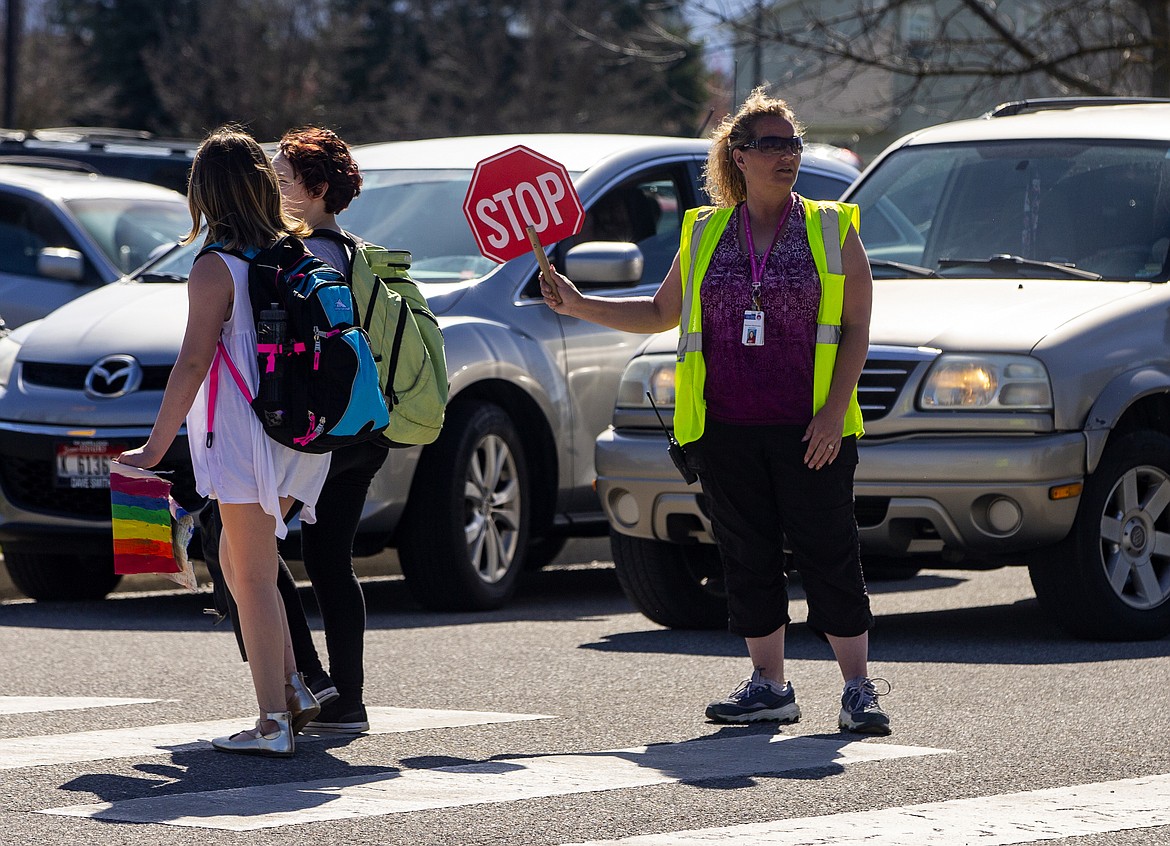Another jolt of growth Huge Cd'A neighborhood plan raises alarms
COEUR d’ALENE — A 500-lot subdivision on the northeast corner of Coeur d’Alene Place is raising concerns of residents on the Ramsey Road corridor who worry about traffic congestion and the development’s impact on already filled schools.
The final phase of Coeur d’Alene Place, a 750-acre Schneidmiller development that began in 1993, is scheduled to be completed within the next eight years.
Set for the last big chunk of open space along Ramsey Road just south of Prairie Avenue, the final work on 130 acres should add 429 more single family homes to the tract.
Although the Schneidmillers are appealing a recent decision to pay for a traffic light to accommodate flow from Wilbur Avenue and Ramsey Road, neighbors are preparing for a juggernaut of vehicles cruising their residential streets.
“That many houses in that area, I can’t see how we can get by with the traffic and no lights or anything,” said Jerry Alexander, who lives on Calispel Drive adjacent to the planned development.
Alexander told city planning commissioners at a recent meeting that he usually exits his neighborhood by using Canfield Avenue to get to Ramsey Road.
“Right now you get down to Ramsey and Hanley during traffic hours, it’s unbelievable … there’s almost a half a mile of traffic. These people got to go somewhere and I don’t know how we can get that without lights.”
Margaret Fedje, also of Calispel Drive, told commissioners that the traffic in her neighborhood near Skyway Elementary School is already heavy, especially before and after school. It concerns her that more traffic may endanger school children.
“We need another light no matter who pays for it,” she said.
Stephen Romero understands the traffic issue. But his concern is one that planners and school district administrators don’t often address because there is no provision in state law that requires for round-table discussions before developments are approved.
“Where will all these kids go to school?” Romero asked.
Romero ticked off the names of new additions to Coeur d’Alene Place: Lake Forest West, Garden Grove, The Trails, Parc Rose South, in addition to new apartment complexes along Ramsey Road.
“Every one of these is located in the northwest part of the city.” said Romero, a father of two Lake City High School students. “So I ask you again, where will all these kids go to school?”
Romero said that in the past there was little coordination between school districts and developers, and although that has changed to a degree, he wondered about checks and balances.
“How can a community grow responsibly and yet have limited communication and no collaboration between the city, developers and the schools?” he asked.
Despite a bond measure that will add classrooms to high schools this year, he said, “They still are not even close to having enough classrooms and teachers to get to a reasonable class size.
“The school is beyond capacity today.”
That sentiment is shared by members of the school district’s long-range planning committee, a citizen advisory group appointed by the school board.
Steve Casey, the committee’s chair, said members have been looking for property in the northwest corner of the district to build an elementary and possibly a middle school, because that’s where the growth is busting like summer zucchini.
In many ways, however, his group is tasked with trying to catch up to what appears as runaway growth, instead of keeping ahead of projected population increases. That means the district must compete with developers for available land.
He wants the school district, city planners and developers to meet regularly to ensure provisions exist that can handle the number of new students generated by the latest subdivisions.
“It would be wise for the city and the school district to hold hands when these subdivisions come in, to know the plans in advance,” said Casey, a former Coeur d’Alene High School principal. “They need to talk about it in a timely fashion. We don’t have that.”
City planners send notices of public hearings to the district, said chief planner Hilary Anderson. The state, however, prohibits the city from requiring land set asides, or provisions for schools to accommodate growth, as a condition of developments.
“Other states do that, (but) Idaho doesn’t,” Anderson said.
School district spokesman Scott Maben said administrators understand the necessity of working with planners, but the growth boom over the past five years as the area climbed out of a recession caught the district off guard.
“The golden time to consider this was during the 2008-2010 recession … when growth slowed down.” Maben said.
Maben acknowledged that Greenstone — the Schneidmiller development company — worked with the city and the school district in the 1990s, resulting in places for three schools at Coeur d’Alene Place including Woodland Middle School, Lake City High and Skyway Elementary.
“They knew it made it more attractive to live in these neighborhoods if kids could walk to school,” Maben said.
Recent sweeping growth seems to have put a damper on long-range commitments, however.
“That was yesterday,” Maben said. “We can’t compel developers to set aside land, (but) we can implore them to work with us.”
The traffic flow through the last phase of Coeur d’Alene Place will use Wilbur Avenue as a major east-west route. Idaho Transportation Department is planning to add a traffic light on U.S. 95, and next year the city is set to punch Wilbur Avenue through an undeveloped field east of U.S. 95 as a connection to Government Way and Dalton Gardens, where an additional traffic light will be installed.
The city has asked the Schneidmillers to pay for a traffic study and any requirements, such as traffic signals, that are unearthed.
Having a traffic signal at Wilbur Avenue and Ramsey Road is imperative to the development project, said city engineer Chris Bosley.
“With this continuation of Wilbur, I see a lot of traffic trying to cross Ramsey between Hanley and Prairie,” Bosley said.
Without a signal, he said, traffic will likely cross at the Hanley intersection.
“And overwhelm that already busy street down there,” he said.
Bosley said a signal requirement wasn’t part of the original PUD — or planned unit development — 20 years ago, but if a traffic study requires a traffic light at Wilbur Avenue, Bosley said the developers should pay the $250,000 price tag.
“The fact of the matter is when these developments come through and then a signal is warranted later, it comes out of streets and engineering budget and we install a signal to mitigate the traffic that was developed from all of these homes being built,” Bosley said.
Developer Kevin Schneidmiller said his company has gone beyond codes and requirements at the Coeur d’Alene Place site over the past decades. Since the 1990s, a significant number of neighboring developments have sprung up, adding to traffic and population increases in the northwest part of greater Coeur d’Alene.
“For us to be solely responsible to perform a traffic study when we did proper master planning” isn’t right, Schneidmiller said. “We don’t believe it’s the responsibility as the developer of Coeur d’Alene Place to be responsible for traffic study.”



